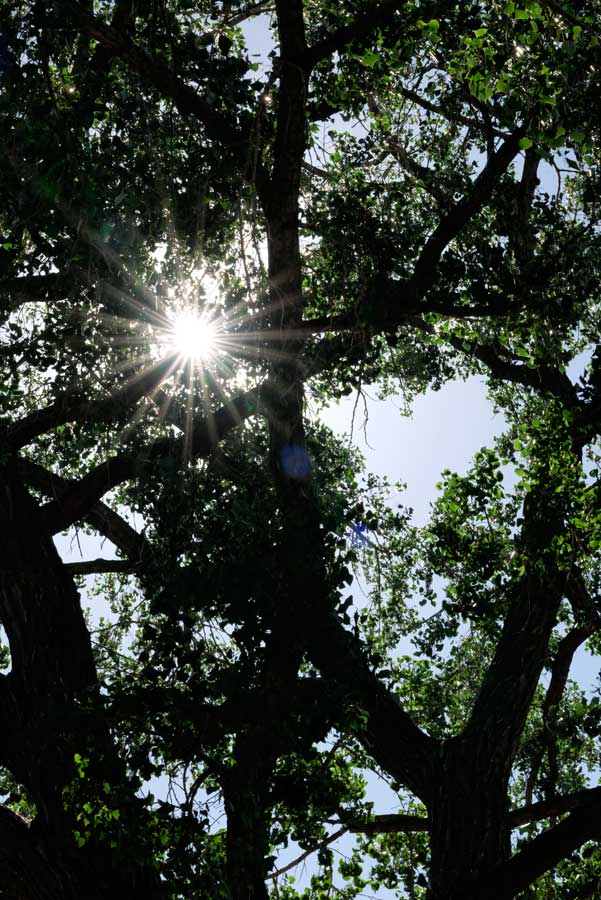Today’s Post by Joe Farace
Look and think before opening the shutter. The heart and mind are the true lens of the camera.—Yousuf Karsh
 As soon “as my ship comes in,” one of the cameras on my bucket list is the full-frame Panasonic Lumix S5 Mark II. But I’m going to need some lenses too.
As soon “as my ship comes in,” one of the cameras on my bucket list is the full-frame Panasonic Lumix S5 Mark II. But I’m going to need some lenses too.
My first impressions are that, like it’s twin the Sigma’s 14-24mm f/2.8 DG DN Art Lens, it’s big but while slightly smaller than the 14-24mm, it’s a bit heaver at 1.84 lbs.
The 24-70mm f/2.8 DG DN Art Lens has an angle-of-view from 84.1 to 34.3 degrees. Unlike the 14-24mm, the 24-70mm lens has a large front element (82mm) that accepts filters and if this was my lens rather than a loaner, I would immediately get something like a B+W XS-Pro Clear MRC-Nano 007 filter ($103.95) to protect this expensive ($1189) lens.
How I made this shot: Walking down Parker, Colorado’s Mainstreet (the correct spelling by the way) you’ll often come across little vignettes, like this one, that are just asking to be photographed. The camera used was Panasonic Lumix S1R with Sigma’s 24-70mm f/2.8 DG DN Art Lens (at 70mm) with a Program mode exposure of 1/1600 sec at f/5.6 and ISO 320. The image was warmed up with Analog Efex to give a homey look.
How Does it Perform?
Since I was in the neighborhood, I took Sigma’s 24-70mm f/2.8 lens to my well-laid wall o’bricks for an informal evaluation: At 24mm and wide open the lens is extremely sharp corner-to-corner. There is some slight vignetting in the bottom one-thirds of the frame that lightens at f/4 and totally disappears by f/5.6. There was no visible barrel or pincushion distortion. At 70mm and f/2.8 the lens is sharp edge-to-edge with just a hint of vignetting at the bottom one-eighth of the frame that vanishes before you get to f/4. As with the 24mm focal length, there was no visible barrel or pincushion distortion at 70mm.
 I like to test lenses for Longitudinal Chromatic Aberration aka LOCA that occurs when a lens cannot focus different colors on the same focal plane. When it occurs you’ll see a magenta or green halo on the edges of objects. The 24-70mm f/2.8 DG DN Art Lens passed the LOCA test with no color fringing of any kind.
I like to test lenses for Longitudinal Chromatic Aberration aka LOCA that occurs when a lens cannot focus different colors on the same focal plane. When it occurs you’ll see a magenta or green halo on the edges of objects. The 24-70mm f/2.8 DG DN Art Lens passed the LOCA test with no color fringing of any kind.
Sunstar testing was challenging because of smoke from a forest fire in the state. On my fourth try, the lens produced acceptable sunstars. (See photo at left.) To be fair I won’t give it any rating on the Farace Sunstar Scale. The clever locking lens hood worked well enough when I was shooting directly into the sun but there was some slight ghosting when shooting under some conditions,
 How I made this shot: Sigma does not call the 24-70mm f/2.8 DG DN Art Lens a macro lens but it will focus as close as 7.09-inches, which at 70mm does a pretty good imitation of .if not a macro lens, at least a close focusing lens. Exposure of 1/1250 sec at f/4.5 and ISO 320 with the Panasonic Lumix S1R in Program mode.
How I made this shot: Sigma does not call the 24-70mm f/2.8 DG DN Art Lens a macro lens but it will focus as close as 7.09-inches, which at 70mm does a pretty good imitation of .if not a macro lens, at least a close focusing lens. Exposure of 1/1250 sec at f/4.5 and ISO 320 with the Panasonic Lumix S1R in Program mode.
The Sigma’s 24-70mm f/2.8 DG DN is an interesting alternative to Panasonic’s own 24-105mm f/4 Macro O.I.S kit lens. What it lacks on the long side of the focal length range, it makes up for by being faster, which should appeal to available light shooters. And while Panasonic calls their lens a macro lens, the Sigma actually focuses several inches closer. Oh yeah, the Sigma is also a few hundred dollars less expensive too
I enjoyed my time shooting Sigma’s 24-70mm f/2.8 DG DN Art Lens; it’s an impressive package of optics.
If you enjoyed today’s blog post and would like to buy Joe a cup of Earl Grey tea ($2.50), click here